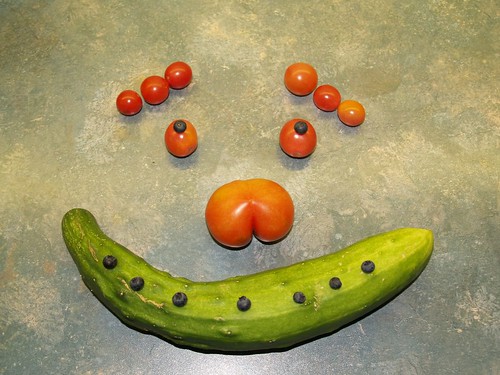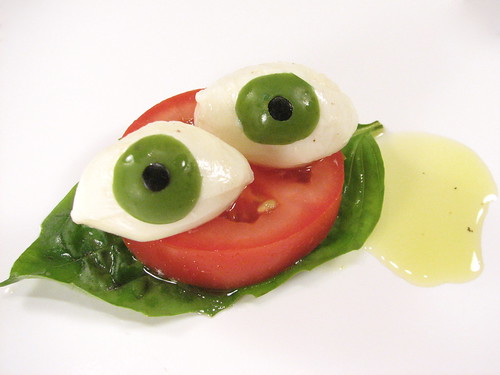It’s back-to-school season and that means packing lunches, again! For many parents, packing the lunchbox can send the heart into nervous palpitations. But for registered dietitian Liz Weiss, it’s an art form. After reading her lunchbox ideas, your anxiety will magically transform into inspiration.

Liz is an award-winning broadcast journalist, cookbook author, and radio show host who started Meal Makeover Moms’ Kitchen, a leading blog for parents in search of better ways to feed their family a super-nutritious diet. She’s also the co-author of two great books: No Whine with Dinner: 150 Healthy, Kid-Tested Recipes from The Meal Makeover Moms and The Moms’ Guide to Meal Makeovers: Improving the Way Your Family Eats, One Meal at a Time and she recently released a mobile recipe app called, Meal Makeovers. You can read more about Liz at http://mealmakeovermoms.com/ and you can download the Meal Makeover app here.

Here’s some of the wisdom Liz shared with us about packing lunches.
- How do you get inspired with packing a good lunchbox?
To get inspired I think about color, flavor, nutrition, and seasonality. I really like to include all of the senses – smell, sight, touch, and taste when thinking about the lunch box. - What has worked for you in the past?
I have found that it’s really helpful to include my kids in the process. I do this by simply asking them: “What do you want for lunch?” The last thing we want –or I want as a dietitian – is to throw away food or for a child to not eat something because it’s not appealing. Plus, if they don’t eat what you packed for lunch they are getting no nutritional benefit. One of the most important ways to get children excited is to present the food in a kid-appealing way. For example if you’re going to slice up apples, put a little lemon on them so they don’t turn brown. Put grapes in a small container. Think about how you package your food. Use small containers and put a little utensil in there. Make it cute and playful. That’s why Bento Box Lunches are so appealing. Kids like to play, so it pays off to think about finger foods –something easy to pick up and bite into. Most young kids are either missing teeth or they have braces – and it’s important to be mindful and make sure they are physically able to eat the food you pack. For example, I would never send young kids to school with whole pieces of fruit like apples. - How important is it to be organized?
It’s very important. As moms we really relish our sleep. If you can get 5-10 extra minutes of sleep in the morning, wouldn’t you want that? Pack shelf-stable milk boxes in the fridge before going to bed. That way it will be cold in the morning and will help keep your kid’s lunch cold. If you’re packing sandwiches, wash and dry the lettuce leaves the night before, and have them in a bag ready to go. Cut up your veggies the night before – have bell peppers, carrots, and cucumbers ready with a small container of dip. Recently, I sent my son to school with pasta salad. I boiled the whole wheat pasta the night before and it was ready to go in the morning. - Can you provide a few simple ideas for recipes?
There are lots of lunchbox recipes on my website. Here are a few ideas to get you started.
Yogurt, granola and fruit cup— morning snack time at school is a perfect time to integrate some healthy options. I like to pack a small container of yogurt and pour some frozen wild blueberries over the top. Then I add a second container of granola to sprinkle on the top.
Pasta salad—I’m all about whole grains, so I start with a whole-wheat rotini. Then I add all-natural deli ham, feta cheese, diced bell peppers, zucchini ribbons, corn on the cob (leftover from last night’s dinner), and some Italian dressing. This is simple and delicious.
Kebabs — These are a favorite. I use cheese cubes, leftover chicken or deli meats like turkey or chicken. Then I add grapes, melon cubes or berries in between.
Chicken salad — Here’s an easy one. I use cubed chicken mixed with plain Greek yogurt, some low-fat mayonnaise. Then I add nuts, dicedgrapes or apples, or diced avocado.
Quesadillas – These are a hit for lunch and offer a nice change of scenery from the standard lunch. I heat the tortilla and then I add beans, veggies, cheese, and BBQ sauce and wrap these hot in foil.

- What are some common lunchbox mistakes?
Packing too much food is a common mistake. Kids have about 20 minutes to eat so I encourage parents to pack the right amount of food for their child and prepare it in bite-sized pieces. Be sure to observe what comes back in the lunch box – this can be very telling. A lot of parents tend to focus on refined carbs because they are easy– they will pack a bagel with cream cheese, a juice box, and a bag of chips. The challenge when packing a bagel/juice box/bag of chips is that it lacks color and nutrition, so focus on a rainbow of colors instead! - What is the trick to keeping it healthy?
Make sure you have fresh fruit and a veggie in your lunch box. Some parents consider juice to be a fruit serving, but it’s best to think about fresh, frozen, or dried fruit as a true serving. Don’t forget about snacks. I view snacks as a mini-meal. Snack time is an opportunity to weave in ingredients that are missing in the diet. If they are not getting veggies or fruit in the morning, make sure they’re an option as a snack. One of my favorite snacks is my Mini Blueberry Cornmeal Muffins.

7. What are some of the worst lunch boxes you’ve seen?
I’ve seen a morning snack of Hawaiian punch and chips. I’ve also seen Gatorade and chocolate chip cookies. These “snacks” bring calories and sugar to the diet, but not much more. Remember that kids are small, and it doesn’t take much to fill their stomachs – so every bite should be packed with nutrition – think nutrient rich and the colors of the rainbow. Every time you pack that lunchbox ask yourself: “What is this ingredient doing for my child?”
What are favorite things to pack for your kids’ lunches? What’s the worst lunch box you’ve ever seen?






















